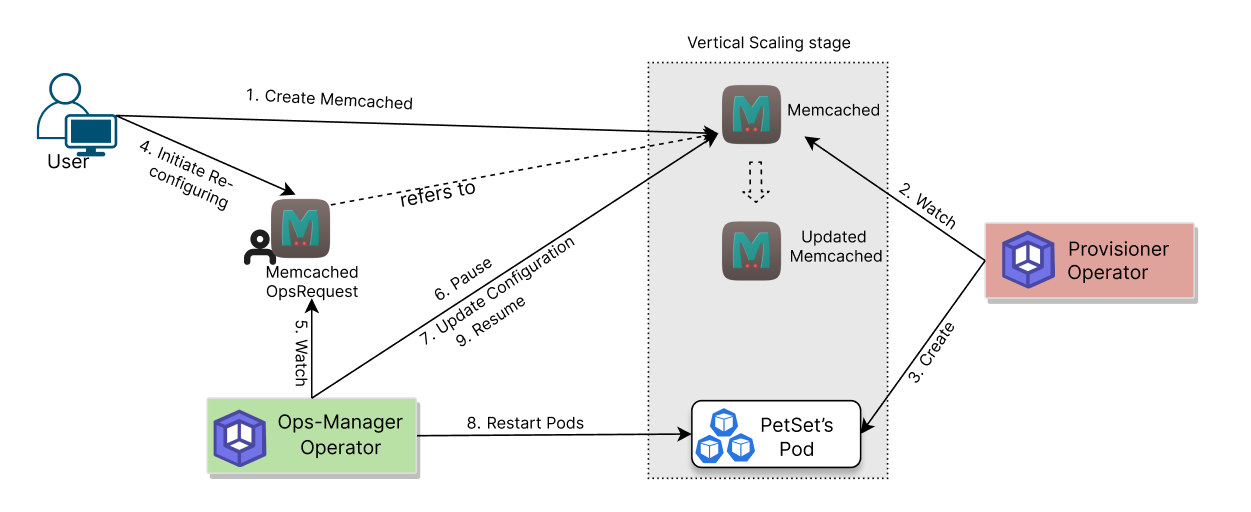You are looking at the documentation of a prior release. To read the documentation of the latest release, please
visit here.
New to KubeDB? Please start here.
Memcached Vertical Scaling Overview
This guide will give you an overview on how KubeDB Ops Manager updates the resources(CPU and Memory) of the Memcached database.
Before You Begin
- You should be familiar with the following
KubeDBconcepts:
How Vertical Scaling Process Works
The following diagram shows how KubeDB Ops Manager updates the resources of the Memcached database. Open the image in a new tab to see the enlarged version.

The updating process consists of the following steps:
At first, a user creates a
MemcachedCustom Resource (CR).KubeDBCommunity operator watches theMemcachedCR.When the operator finds a
MemcachedCR, it creates required number ofPetSetsand related necessary stuff like appbinding, services, etc.Then, in order to update the version of the
Memcacheddatabase the user creates aMemcachedOpsRequestCR with the desired version.KubeDBEnterprise operator watches theMemcachedOpsRequestCR.When it finds a
MemcachedOpsRequestCR, it halts theMemcachedobject which is referred from theMemcachedOpsRequest. So, theKubeDBCommunity operator doesn’t perform any operations on theMemcachedobject during the updating process.After the successful update of the resources of the PetSet’s replica, the
KubeDBEnterprise operator updates theMemcachedobject to reflect the updated state.After successfully updating of
Memcachedobject, theKubeDBEnterprise operator resumes theMemcachedobject so that theKubeDBCommunity operator can resume its usual operations.
In the next doc, we are going to show a step-by-step guide on updating of a Memcached database using update operation.



































